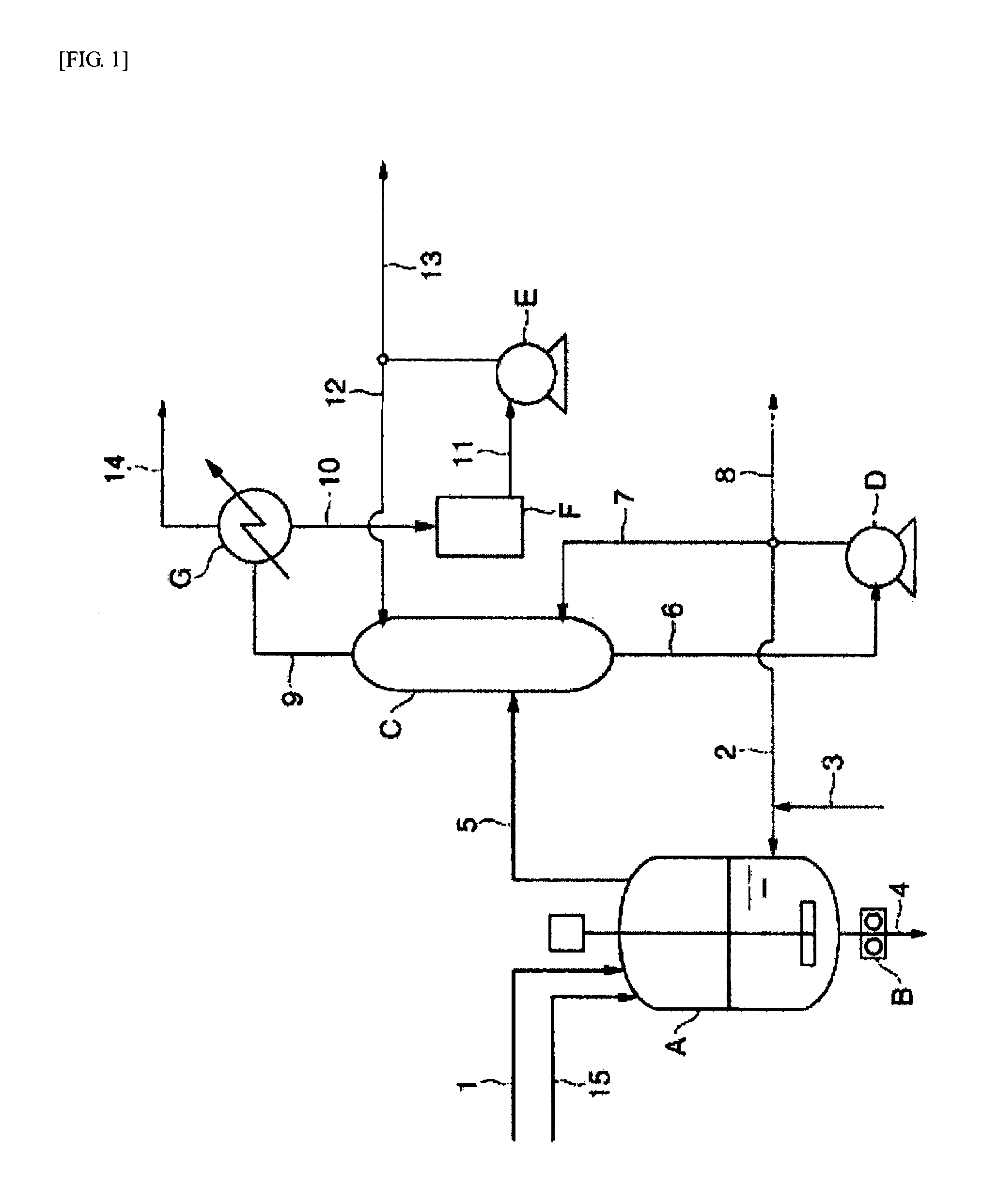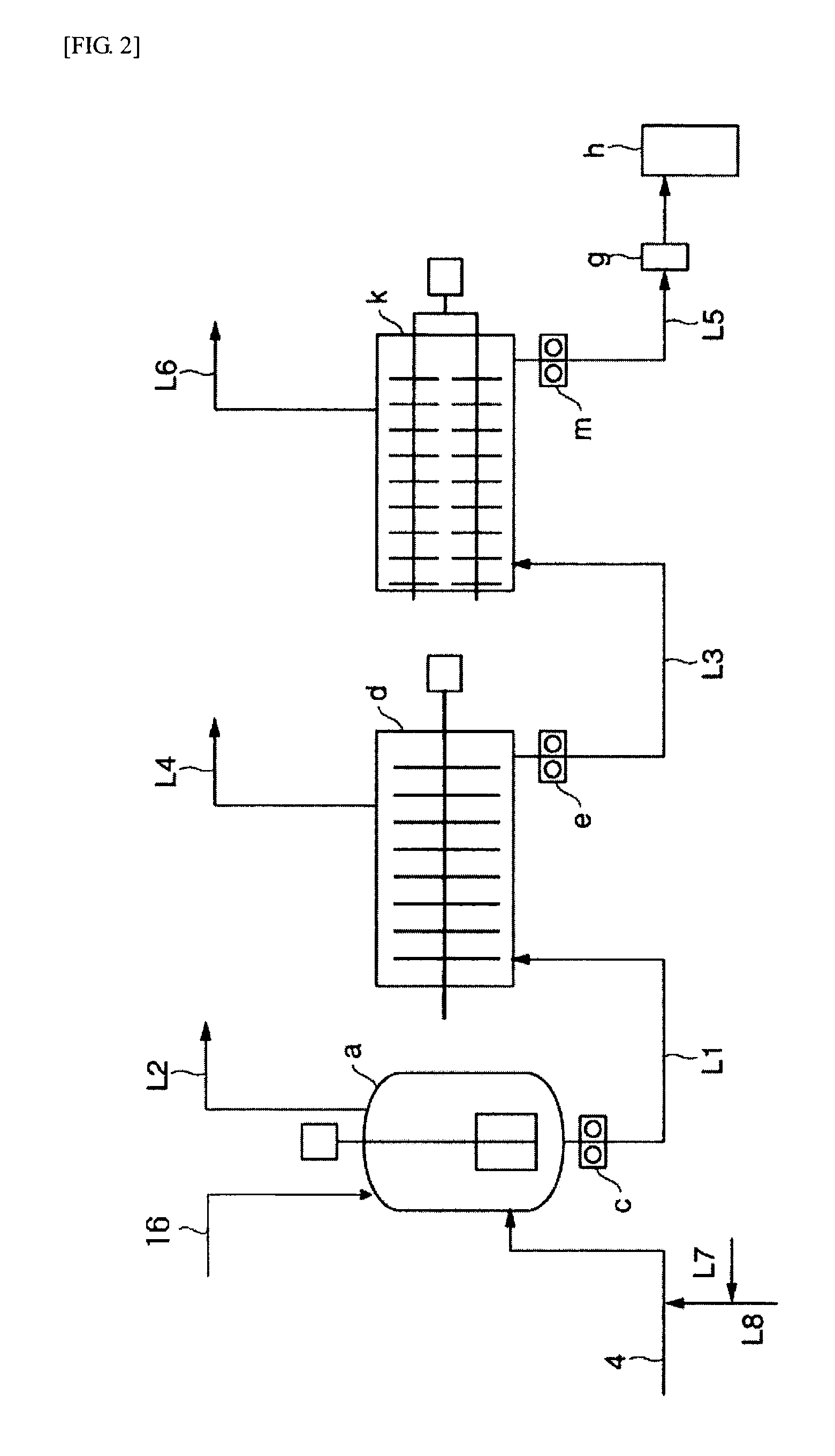Aliphatic polyester resin and its production method
- Summary
- Abstract
- Description
- Claims
- Application Information
AI Technical Summary
Benefits of technology
Problems solved by technology
Method used
Image
Examples
example 1
[0400]100.3 parts by weight of succinic acid, 99.5 parts by weight of 1,4-butanediol and 0.37 parts by weight of malic acid as raw materials were charged in a reaction vessel equipped with a stirring apparatus, a nitrogen inlet, a heating apparatus, thermometer and an exhaust outlet for pressure reduction, and the system was made nitrogen atmosphere by nitrogen-reduced pressure substitution. The system was elevated to 230° C. over 1 hour while stirring the system, and reaction was conducted at this temperature for 1 hour. Thereafter, the catalyst solution obtained above was added. The amount added was an amount such that titanium atom is 50 ppm to the weight of the aliphatic polyester resin obtained. Temperature was elevated to 250° C. over 280 minutes, and simultaneously pressure was reduced to 0.7 hPa. Reaction was conducted for 5.6 hours from the initiation of pressure reduction to obtain an aliphatic polyester resin.
[0401]In this case, average pressure-reducing rate of from ordi...
example 2
[0403]Production was conducted under the same conditions as in Example 1, except that average pressure-reducing rate of from ordinary pressure to 2 hPa was 12.8 hPa / min, the amount of decrease in polymer temperature in changing pressure in the reaction system between 100 hPa and 10 hPa was 7.3° C., and reaction was conducted for 6.5 hours from the initiation of pressure reduction.
[0404]Reduced viscosity of the aliphatic polyester resin obtained was 2.4 dL / g, and white polyester (YI value: 3.9) was obtained. The value of MVR (2.16) at 190° C. was 2.0 cm3 / 10 min, the value of MVR (10.0) was 29.4 cm3 / 10 min, and the value of MVR-R obtained by dividing the value of MVR (10.0) by the value of MVR (2.16) was 14.7. The amount of terminal carboxyl groups of the aliphatic polyester resin obtained was 44 μmol / g. To all copolymer units, the unit derived from malic acid was 0.072 mol %, the unit derived from fumaric acid was 0.022 mol %, the unit derived from maleic acid was 0.0055 mol %, and t...
example 3
[0405]100 parts by weight of the aliphatic polyester resin (B) obtained in Example 2 and 0.0012 parts by weight of an organic peroxide (PERHEXA 25B, manufactured by NOF corporation) were mixed with Henschel mixer. The mixture obtained was melt mixed at a temperature of 190° C. and screw rotation speed of 150 rpm using a twin-screw extrusion mixing machine, and a strand was cooled with water and cut to obtain a white resin composition. Thereafter, pellets of the resin composition were dried at 70° C. for 8 hours in nitrogen atmosphere.
[0406]MFR of the resin composition obtained was 1.0 g / 10 min which is a value lower than raw materials. Therefore, it was understood that MFR can be controlled even though the amount of the organic peroxide used is small. Furthermore, the resin composition obtained was formed into a sheet having a thickness of 450 μm using a T-die sheet forming machine, and thereafter, vacuum forming was carried out at heater temperature of 450° C. to form a vessel. As ...
PUM
| Property | Measurement | Unit |
|---|---|---|
| Temperature | aaaaa | aaaaa |
| Temperature | aaaaa | aaaaa |
| Temperature | aaaaa | aaaaa |
Abstract
Description
Claims
Application Information
 Login to View More
Login to View More - R&D
- Intellectual Property
- Life Sciences
- Materials
- Tech Scout
- Unparalleled Data Quality
- Higher Quality Content
- 60% Fewer Hallucinations
Browse by: Latest US Patents, China's latest patents, Technical Efficacy Thesaurus, Application Domain, Technology Topic, Popular Technical Reports.
© 2025 PatSnap. All rights reserved.Legal|Privacy policy|Modern Slavery Act Transparency Statement|Sitemap|About US| Contact US: help@patsnap.com



